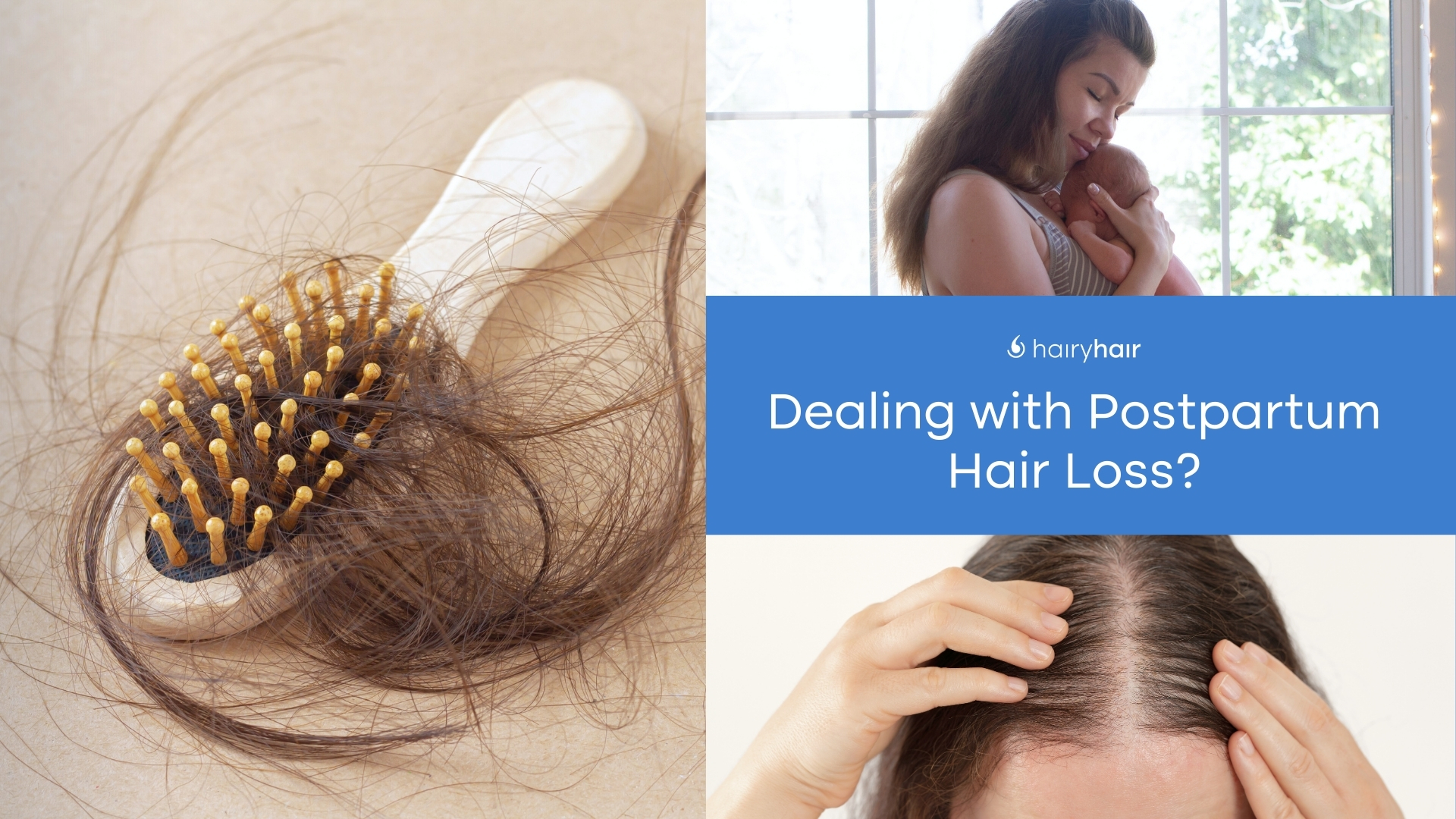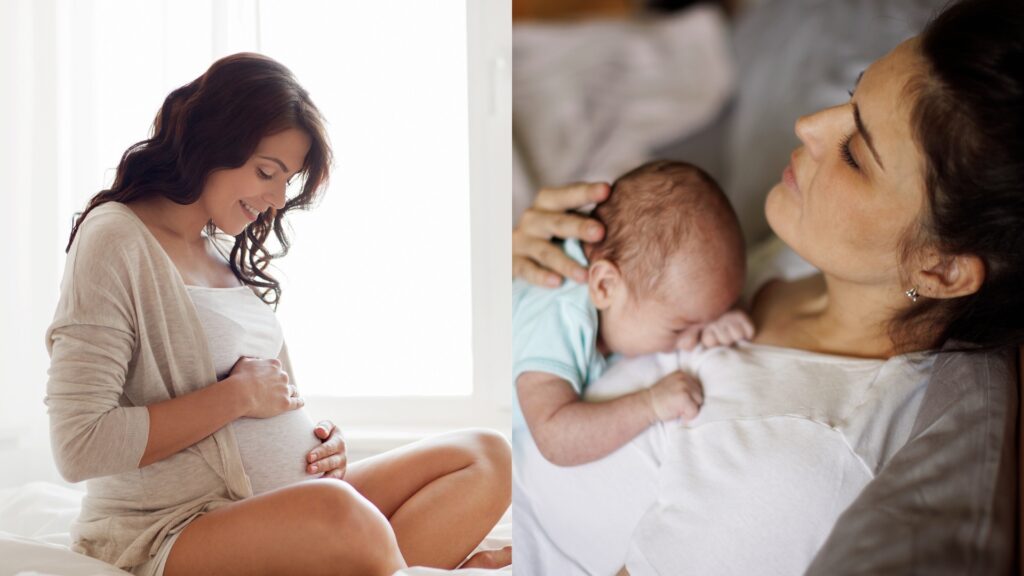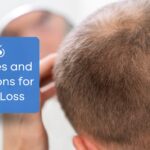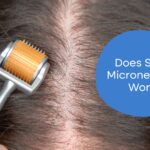Understanding Hair Thinning Post-Pregnancy: Causes and Solutions

Once you’ve birthed a baby, your hair can turn against you. The healthy and luscious hair seen in pregnancy can turn into handfuls that clog up the shower drain. Here’s the catch, though—almost every woman goes through it.
It’s just those hormones balancing out. The silver lining: It’s most likely just a phase, and your hair will regain its senses within a few months. In the meantime, there are solutions to living with the shedding.
Here we’ll look at the causes of postpartum hair loss and how to manage it. We’ll also examine how Hairy Hair can help you if you’re struggling with hair loss.
What are the causes of hair thinning post-pregnancy?
Changes in hormones during pregnancy and after childbirth can cause a temporary shift in hair growth, leading to shedding. As placental estrogen levels drop after delivery, postpartum hair loss starts, and hair that was growing enters the resting phase, leading to noticeable hair loss.
The Journal of the European Academy of Dermatology and Venereology found that the mean anagen (growth) rate in month 4 of post-partum was considerably lower than in the 6th and 9th months of pregnancy. This is called telogen effluvium, a temporary form of alopecia. Childbirth is an emotionally stressful process, but it also puts a strain on your body.

Telogen effluvium can arise due to physical stressors such as surgery or childbirth. In these situations, the body prioritises sending nutrients to the vital organs. Secondary functions like hair growth lack the necessary vitamins and minerals, and a vitamin deficiency can cause hair loss.
This hair loss is a typical part of the recovery process, but if the shedding is significant, it can cause distress for new mothers.
When does postpartum hair loss occur?
Hair loss after pregnancy is likely to happen a few months later, when the hormones start rebalancing, and can last for months. Most women undergo this after pregnancy, as the Iran Journal of Dermatology has reported that 68.4% of the subjects of a study on 329 women who had given birth experienced postpartum hair loss.
You may question how long the postpartum hair loss will last. Hair growth changes will take a while as the hair growth cycle will take some time to adjust.
The timing of postpartum hair loss is unique to everyone, but if you’ve had long or thick hair in pregnancy, you’ll more likely notice the loss. Knowing when it comes helps you prepare yourself for change, and you’ll be ready to take a few steps to prevent shedding.
How long does hair thinning post-pregnancy last?
Postpartum hair loss will typically last three to six months, although this will depend on one’s health and hormone levels. Re-growth is typically possible one year after giving birth because the hair has shifted back into the pre-pregnancy state.
The majority of mothers can count on hair thickness being back to normal around the baby’s first birthday, according to the American Academy of Dermatology.
The “glow” that one experiences while pregnant is related to hormone production in the body. When your body responds to pregnancy, hormones are released in spasms to nourish the developing baby. Hair is known to appear healthier and more vibrant while pregnant, but it will not be of the same quality while going through the growth cycle during recovery.
Sometimes, however, hair loss can be longer-term and must be treated if it is the result of a medical condition. Nutrient reserves can deplete after giving birth as your body changes, so an excellent diet with plenty of vitamin D and iron will assist in keeping hair healthy and reduce thinning after pregnancy.
Prevention and treatment of postpartum hair loss
Treatment
Some steps to reduce shedding during this period include using lightweight conditioners and avoiding high heat settings on styling tools.
Cutting your hair or messing around with a new style can be a game changer, particularly if your hair is slightly limp and flat. And make sure to ditch those über-tight ponytails, as they can cause further shedding. Try putting it in a headband or scarf to cover up spots and create volume.
Food-wise, leafy greens and omega-3s—salmon, walnuts, chia seeds—are great for your hair. Add some zinc and biotin too if your hair is feeling a bit lifeless. Your hair will thank you, eventually. But if your hair’s still falling out, ring your dermatologist or GP for advice on next steps.
Prevention
Stress reduction is not entirely possible, but some prep work isn’t going to hurt. Head massages are soothing and can reduce stress while getting the blood moving around the scalp.
Gentle hair care products will help prevent breakage while keeping your strands healthy. Be careful with styling, get the occasional trim, and eat a healthy diet.
How can Hairy Hair help with my hair loss?
Postpartum hair loss may be challenging to control amidst this stressful period. It normally requires good hair care, optimal diet, and stress management, which are difficult to obtain while caring for a newborn.
For the majority, postpartum hair loss is self-adjusting, and hair will return after a few months. Other people’s hair loss, however, could be a symptom of a condition that needs to be addressed. Hair loss could occur because of environmental or circumstantial factors, i.e., giving birth, but it can also be a result of fixed factors like age or heredity.
It is for this reason that Hairy Hair has developed a hair loss treatment that has a powerful mix of ingredients. It prevents the production of dihydrotestosterone (DHT), the hormone that causes hair follicles to shrink, leading to baldness. It is a vasodilator too, opening up blood vessels in your scalp to supply your follicles with the required nutrients.
It’s rounded off with a keratin promoter, the protein central to hair strands, and has anti-inflammatory properties to keep your scalp environment healthy. This multi-treatment approach may give you a better chance at preventing hair loss and encouraging regrowth versus a single treatment plan.
Postpartum hair loss and hair growth treatments
Post-pregnancy hair thinning is a usual but temporary occurrence for most new mothers in the months after childbirth. Understanding how hair loss may happen, staying healthy, and reducing stress can ease the amount of shedding and stimulate hair growth.
Using the right hair care techniques and maintaining a healthy lifestyle can also help during this time. This is a regular part of the postpartum process, and while it can cause distress, it will typically remedy itself.
If you’re worried about losing hair, contact Hairy Hair to begin your hair loss treatment. Fill in a brief online form so we can get to know you and learn about your hair loss. From there, a qualified Australian GP will call you to lay out your personalised treatment plan and answer any questions you might have.
Finally, your prescription will be sent right to your door. However, your treatment doesn’t end there. Our support team will be on hand to monitor your progress and guide you on your journey to potentially renewed hair and confidence.


